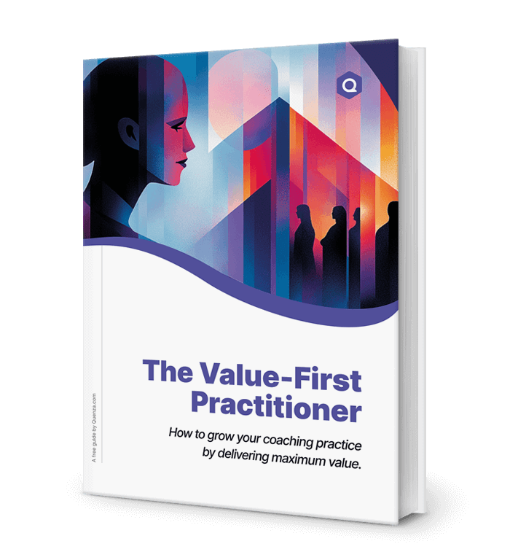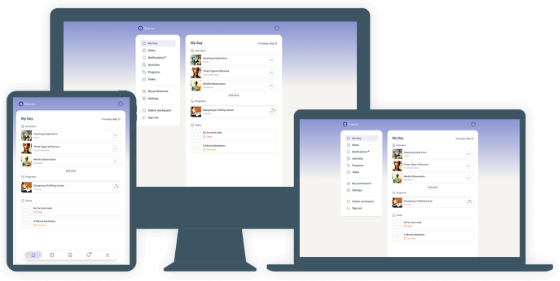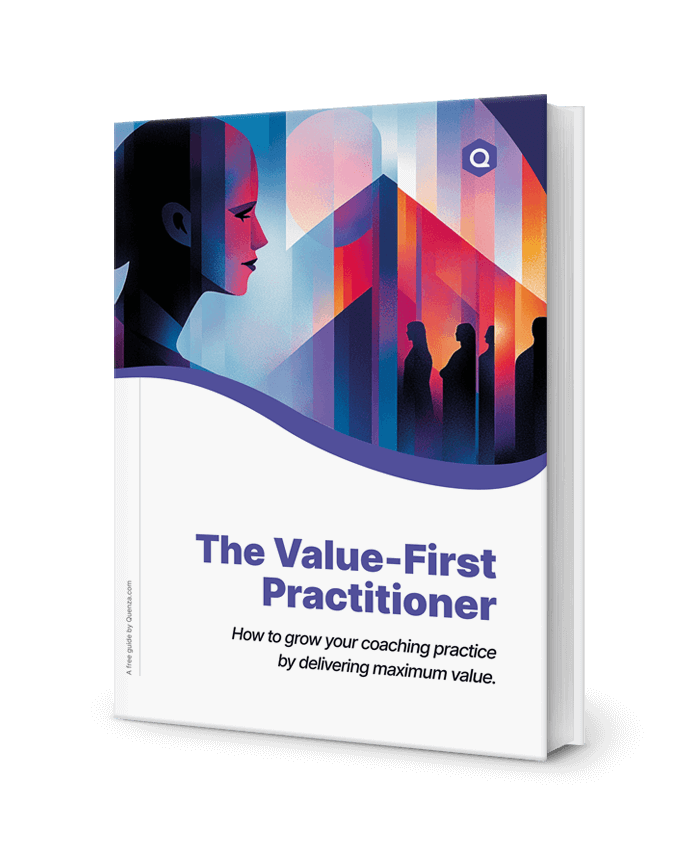Test anxiety is a common challenge faced by students of all ages, often leading to decreased academic performance and increased stress. This overwhelming fear of failure during exams can manifest as physical symptoms like rapid heartbeat and sweating, or psychological symptoms such as racing thoughts and difficulty concentrating. The impact of test anxiety extends beyond just test scores, affecting overall well-being and self-esteem.
Fortunately, various therapeutic approaches have proven effective in managing and overcoming test anxiety. This blog post explores these techniques, providing valuable insights for students, parents, and educators seeking to address this pervasive issue. By understanding and implementing these strategies, individuals can not only improve their test performance but also develop lifelong skills for managing stress and anxiety.
As we delve into the world of therapy for test anxiety, we’ll examine cognitive-behavioral techniques, mindfulness-based approaches, and relaxation methods. We’ll also discuss the importance of early intervention and the role of technology in modern anxiety management. Whether you’re a student grappling with test anxiety or a professional looking to support others, this comprehensive guide will equip you with the knowledge and tools to tackle test anxiety head-on.
Understanding Test Anxiety
Test anxiety is more than just feeling nervous before an exam. It’s a form of performance anxiety that can significantly impair a student’s ability to demonstrate their true knowledge and skills. Understanding the nature of test anxiety is crucial for effectively addressing and managing it.
Definition and Common Symptoms:
Test anxiety is characterized by excessive worry and fear related to test-taking situations [1]. Common symptoms include:
| Physical Symptoms | Psychological Symptoms |
|---|---|
| Increased heart rate | Racing thoughts |
| Sweating | Difficulty concentrating |
| Trembling or shaking | Negative self-talk |
| Nausea or stomach upset | Fear of failure |
| Shortness of breath | Mind going blank |
Causes and Triggers of Test Anxiety:
Several factors can contribute to the development of test anxiety:
- Fear of failure: The pressure to perform well can create intense anxiety, especially when students tie their self-worth to academic performance.
- Perfectionism: Setting unrealistically high standards can lead to excessive stress and anxiety.
- Past negative experiences: Previous poor test performances can create a cycle of anxiety for future exams.
- Lack of preparation: Feeling unprepared can exacerbate anxiety symptoms.
- Time pressure: The limited duration of tests can create additional stress for some students.
Understanding these underlying causes and triggers is essential for developing effective coping strategies and seeking appropriate therapeutic interventions. By recognizing the signs and sources of test anxiety, individuals can take proactive steps to manage their symptoms and improve their test-taking experiences.
Cognitive-Behavioral Therapy (CBT) for Test Anxiety
Cognitive-Behavioral Therapy (CBT) has emerged as one of the most effective approaches for managing test anxiety [2]. This therapeutic technique focuses on identifying and modifying negative thought patterns and behaviors that contribute to anxiety, replacing them with more constructive and realistic perspectives.
How CBT Works for Test Anxiety:
CBT operates on the principle that our thoughts, feelings, and behaviors are interconnected. For individuals with test anxiety, negative thoughts about their abilities or the consequences of failure can trigger anxiety symptoms and poor performance. CBT helps break this cycle by:
- Identifying negative thought patterns: Recognizing irrational or exaggerated thoughts about test-taking.
- Challenging these thoughts: Evaluating the evidence for and against these negative beliefs.
- Replacing negative thoughts with realistic, positive ones: Developing a more balanced perspective on test-taking abilities and outcomes.
- Modifying behaviors: Implementing effective study habits and test-taking strategies.
Key Techniques Used in CBT for Test Anxiety:
- Cognitive Restructuring: This involves identifying and challenging negative thoughts related to test-taking. For example, transforming “I’m going to fail this test” into “I’ve prepared well and will do my best.”
- Exposure Therapy: Gradually exposing individuals to test-like situations in a controlled environment helps desensitize them to anxiety triggers.
- Relaxation Training: Teaching relaxation techniques like deep breathing and progressive muscle relaxation to manage physical symptoms of anxiety.
- Study Skills Training: Improving time management, organization, and effective study techniques to boost confidence and reduce anxiety.
- Positive Self-Talk: Developing and practicing positive affirmations to counter negative self-talk during test preparation and test-taking.
By employing these CBT techniques, individuals can gain greater control over their thoughts and emotions related to test-taking. This not only helps reduce anxiety symptoms but also improves overall academic performance and self-confidence.
Mindfulness-Based Therapies for Managing Test Anxiety
Mindfulness-based therapies have gained significant traction in recent years as effective tools for managing various forms of anxiety, including test anxiety [3]. These approaches focus on cultivating present-moment awareness and non-judgmental acceptance of thoughts and feelings, which can be particularly beneficial for students struggling with test-related stress.
Benefits of Mindfulness for Test Anxiety:
- Reduced Rumination: Mindfulness helps break the cycle of repetitive negative thoughts about past or future test performances.
- Improved Focus: By training attention on the present moment, mindfulness enhances concentration during study sessions and exams.
- Emotional Regulation: Mindfulness practices help students recognize and manage anxiety symptoms more effectively.
- Increased Self-Compassion: Mindfulness fosters a kinder, more accepting attitude towards oneself, reducing self-criticism often associated with test anxiety.
- Better Stress Management: Regular mindfulness practice can lower overall stress levels, benefiting various aspects of academic life.
Mindfulness Techniques and Exercises:
- Mindful Breathing: This foundational practice involves focusing attention on the breath, helping to anchor the mind in the present moment and calm the nervous system.
- Body Scan: This technique involves systematically bringing awareness to different parts of the body, promoting relaxation and body awareness.
- Mindful Test-Taking: Applying mindfulness during exams by taking brief moments to check in with oneself, breathe, and refocus attention.
- Loving-Kindness Meditation: This practice involves cultivating feelings of compassion for oneself and others, which can be particularly helpful in combating negative self-talk.
- Mindful Study Sessions: Incorporating short mindfulness breaks during study sessions to maintain focus and prevent burnout.
By integrating these mindfulness techniques into their daily routines and test preparation strategies, students can develop a more balanced and less anxious approach to academic challenges. Mindfulness not only helps manage test anxiety but also equips students with valuable life skills for managing stress and maintaining emotional well-being.
Relaxation Techniques to Reduce Test Anxiety
Relaxation techniques play a crucial role in managing the physical and psychological symptoms of test anxiety. These methods help activate the body’s relaxation response, counteracting the stress response that often accompanies anxiety. By incorporating these techniques into their routine, students can significantly reduce test anxiety and improve their overall well-being.
Deep Breathing Exercises:
Deep breathing is a simple yet powerful technique that can be practiced anywhere, making it particularly useful for managing anxiety during test preparation and test-taking situations [4].
- Diaphragmatic Breathing:
- Sit or lie comfortably with one hand on your chest and the other on your abdomen.
- Inhale slowly through your nose, feeling your abdomen rise.
- Exhale slowly through your mouth, feeling your abdomen fall.
- Repeat for 5-10 minutes, focusing on the sensation of your breath.
- 4-7-8 Breathing:
- Inhale quietly through your nose for 4 seconds.
- Hold your breath for 7 seconds.
- Exhale completely through your mouth for 8 seconds.
- Repeat this cycle 4 times.
Progressive Muscle Relaxation:
This technique involves systematically tensing and relaxing different muscle groups, promoting physical relaxation and body awareness.
Steps for Progressive Muscle Relaxation:
- Find a quiet, comfortable place to sit or lie down.
- Starting with your feet, tense the muscles as tightly as you can for 5 seconds.
- Release the tension and notice the feeling of relaxation for 10-15 seconds.
- Move up to your calves, then thighs, and continue this process through your body, including hands, arms, shoulders, neck, and face.
- Focus on the contrast between tension and relaxation in each muscle group.
By practicing these relaxation techniques regularly, students can develop a greater sense of control over their physical responses to stress. This not only helps in managing test anxiety but also provides valuable tools for handling other stressful situations in life. Incorporating these techniques into daily routines and using them during study sessions can significantly improve a student’s ability to remain calm and focused during exams.
| Therapy Approach | Main Focus | Key Techniques |
|---|---|---|
| Cognitive-Behavioral Therapy (CBT) | Changing thought patterns and behaviors | Cognitive restructuring, exposure therapy |
| Mindfulness-Based Therapy | Present-moment awareness and acceptance | Meditation, body scan, mindful breathing |
| Relaxation Techniques | Reducing physical tension and stress | Deep breathing, progressive muscle relaxation |
The Role of Early Intervention in Test Anxiety Management
Early intervention plays a crucial role in effectively managing test anxiety and preventing its long-term negative impacts on academic performance and mental health [5]. Recognizing and addressing test anxiety symptoms at their onset can lead to better outcomes and equip students with lifelong coping skills.
Importance of Addressing Test Anxiety Early:
- Prevents Escalation: Early intervention can stop mild anxiety from developing into a more severe, chronic condition.
- Improves Academic Performance: Addressing anxiety early helps maintain and improve academic performance before it significantly declines.
- Boosts Confidence: Early success in managing anxiety can increase a student’s self-efficacy and overall confidence.
- Develops Coping Skills: Early intervention teaches valuable stress management skills that are useful beyond academics.
- Reduces Long-term Mental Health Risks: Timely management of anxiety can prevent the development of other mental health issues.
Strategies for Early Intervention:
- Education and Awareness: Implement programs in schools to educate students, parents, and teachers about test anxiety symptoms and management techniques.
- Regular Screenings: Conduct routine assessments to identify students who may be experiencing test anxiety.
- Peer Support Groups: Establish support groups where students can share experiences and coping strategies.
- Targeted Skill-building Workshops: Offer workshops on study skills, time management, and relaxation techniques.
- Individualized Counseling: Provide access to school counselors or psychologists for one-on-one support.
- Parent Involvement: Educate parents on recognizing signs of test anxiety and how to support their children.
- Teacher Training: Equip educators with tools to create a supportive classroom environment and implement anxiety-reducing strategies.
By prioritizing early intervention, educational institutions and families can create a supportive environment that addresses test anxiety proactively, fostering academic success and emotional well-being.
Technology-Assisted Therapy for Test Anxiety
In the digital age, technology has become an invaluable tool in the management of test anxiety. From smartphone apps to virtual reality experiences, tech-based solutions offer accessible, engaging, and often cost-effective ways to complement traditional therapy approaches.
Digital Platforms and Apps for Anxiety Management:
- Meditation and Mindfulness Apps:
- Examples: Headspace, Calm, Insight Timer
- Features: Guided meditations, breathing exercises, sleep stories
- Cognitive Behavioral Therapy (CBT) Apps:
- Examples: MoodGYM, Woebot, Youper
- Features: Mood tracking, cognitive restructuring exercises, personalized coping strategies
- Study Aid and Time Management Apps:
- Examples: Forest, Pomodoro Timer, Quizlet
- Features: Focus timers, flashcards, gamified study sessions
- Biofeedback Apps:
- Examples: Breathe2Relax, Nerva
- Features: Heart rate monitoring, guided breathing exercises
Benefits of Digital Solutions:
- 24/7 Accessibility: Provides support anytime, anywhere
- Personalization: Tailors interventions based on user data
- Engagement: Gamification elements increase motivation and adherence
- Cost-Effectiveness: Often more affordable than traditional therapy sessions
Virtual Reality Therapy for Test Anxiety:
Virtual Reality (VR) therapy is an innovative approach that allows individuals to confront and manage their anxiety in simulated test environments [6].
How VR Therapy Works:
- Immersive Experience: Users are placed in realistic, 3D test environments.
- Gradual Exposure: Anxiety-inducing scenarios are introduced progressively.
- Real-time Monitoring: Physiological responses (e.g., heart rate) can be tracked during sessions.
- Guided Relaxation: Therapists can provide real-time guidance and relaxation techniques.
Benefits of VR Therapy:
- Safe Environment: Allows practice without real-world consequences
- Controlled Exposure: Therapists can adjust difficulty levels precisely
- Immediate Feedback: Provides instant data on anxiety levels and coping effectiveness
- Enhanced Engagement: Immersive nature can increase therapy adherence
By leveraging these technological advancements, individuals struggling with test anxiety can access a wider range of tools and resources to complement their therapeutic journey, leading to more personalized and effective anxiety management strategies.
Finding the Right Therapist for Test Anxiety
Selecting the right therapist is a crucial step in effectively addressing test anxiety [7]. A skilled professional can provide personalized strategies and support tailored to an individual’s specific needs and circumstances. Here’s how to navigate the process of finding and choosing a therapist specializing in test anxiety.
How to Choose a Therapist Specializing in Test Anxiety:
- Research Credentials:
- Look for licensed psychologists, counselors, or therapists with experience in anxiety disorders.
- Check for specializations in academic or performance anxiety.
- Consider Therapeutic Approaches:
- Look for therapists skilled in evidence-based approaches like CBT, mindfulness-based therapies, or exposure therapy.
- Check Experience:
- Seek therapists with a track record of working with students or individuals with test anxiety.
- Evaluate Accessibility:
- Consider location, availability, and whether they offer in-person or teletherapy options.
- Review Online Presence:
- Check their website or professional profiles for information on their approach to test anxiety.
- Ask for Recommendations:
- Consult school counselors, teachers, or your primary care physician for referrals.
- Consider Insurance Coverage:
- Verify if the therapist accepts your insurance to ensure affordability.
Questions to Ask When Considering Therapy:
- What is your experience in treating test anxiety specifically?
- What therapeutic approaches do you use for managing test anxiety?
- How do you tailor your treatment to individual needs and learning styles?
- What is the typical duration and frequency of treatment for test anxiety?
- Do you incorporate any specific techniques or tools for academic performance enhancement?
- How do you measure progress in therapy?
- Do you collaborate with schools or teachers as part of the treatment process?
- What role do you see for parents or support systems in the therapy process?
- Do you offer any between-session resources or exercises for managing anxiety?
- How do you handle setbacks or relapses in anxiety symptoms?
By carefully selecting a therapist and asking these important questions, individuals can ensure they receive the most appropriate and effective treatment for their test anxiety. Remember, finding the right therapist may take time, and it’s okay to meet with a few different professionals before deciding on the best fit for your needs.
Conclusion
Overcoming test anxiety is a journey that requires patience, commitment, and the right tools and support. Throughout this blog post, we’ve explored various effective therapy techniques and strategies for managing test anxiety and improving academic performance.
Key Takeaways:
- Understanding Test Anxiety: Recognizing the symptoms and causes of test anxiety is the first step towards addressing it effectively.
- Cognitive-Behavioral Therapy (CBT): This approach helps reframe negative thought patterns and develop healthier coping mechanisms.
- Mindfulness-Based Therapies: Cultivating present-moment awareness can significantly reduce anxiety and improve focus.
- Relaxation Techniques: Deep breathing and progressive muscle relaxation are powerful tools for managing physical symptoms of anxiety.
- Early Intervention: Addressing test anxiety early can prevent its escalation and long-term negative impacts.
- Technology-Assisted Therapy: Digital platforms, apps, and virtual reality offer innovative ways to complement traditional therapy approaches.
- Finding the Right Therapist: Selecting a therapist who specializes in test anxiety is crucial for receiving personalized and effective treatment.
Remember, overcoming test anxiety is not just about improving test scores; it’s about developing lifelong skills for managing stress and anxiety. These techniques and strategies can be applied beyond the classroom, benefiting various aspects of life.
If you’re struggling with test anxiety, don’t hesitate to seek help. Whether it’s through school counseling services, private therapy, or utilizing technology-based solutions, taking that first step towards managing your anxiety can lead to significant improvements in your academic performance and overall well-being.
By implementing these strategies and seeking appropriate support, you can transform your relationship with tests and exams. Instead of sources of dread, they can become opportunities to demonstrate your knowledge and skills confidently. Remember, with the right tools and support, you have the power to overcome test anxiety and unlock your full academic potential.
Frequently Asked Questions
The timeline for improvement can vary depending on the individual and the severity of their test anxiety. Some people may notice improvements within a few weeks of starting therapy, while others may take several months. Cognitive-Behavioral Therapy (CBT), for instance, typically shows significant improvements within 12-20 sessions. However, it’s important to remember that therapy is a process, and consistent practice of learned techniques is key to long-term success.
While many people experience significant reduction in their test anxiety through therapy and coping strategies, it’s more accurate to think of it as a skill of management rather than a “cure.” The goal of therapy is to provide tools and strategies to effectively manage anxiety symptoms when they arise. With practice, these strategies become second nature, allowing individuals to approach tests with confidence. Some people may find that their test anxiety diminishes to the point where it’s no longer a significant issue, while others may need to continually apply their learned techniques.
Parents can play a crucial role in supporting students with test anxiety. Some effective strategies include: 1) Encouraging open communication about feelings and concerns, 2) Helping to maintain a balanced perspective on the importance of tests, 3) Assisting in creating a structured study schedule to prevent last-minute cramming, 4) Promoting healthy habits like regular sleep, exercise, and nutrition, 5) Practicing relaxation techniques together, and 6) Focusing on effort and progress rather than just grades. It’s important for parents to avoid adding pressure and instead provide a supportive, understanding environment.
Yes, certain lifestyle and dietary changes can contribute to managing test anxiety. Regular exercise has been shown to reduce overall anxiety levels and improve cognitive function. A balanced diet rich in omega-3 fatty acids, complex carbohydrates, and foods high in vitamin B can help support brain function and mood regulation. Limiting caffeine and sugar intake can prevent jitters and crashes that may exacerbate anxiety symptoms. Adequate sleep is crucial for memory consolidation and stress management. Establishing a consistent sleep schedule and practicing good sleep hygiene can significantly impact anxiety levels and test performance.
Test anxiety is a specific form of performance anxiety that’s triggered by testing situations. While it shares some similarities with other anxiety disorders, it’s unique in its focus on academic or testing environments. This specificity can actually be beneficial in treatment, as therapy can be tailored to address the particular triggers and thought patterns associated with test-taking. Treatment approaches often incorporate elements used for general anxiety disorders, such as CBT and relaxation techniques, but with a specific focus on academic scenarios. Additionally, treatment for test anxiety often includes study skills training and exposure therapy using test-like situations, which might not be relevant for other forms of anxiety.
References
- ^ Zeidner, M. (2014). Anxiety in education. In R. Pekrun & L. Linnenbrink-Garcia (Eds.), International handbook of emotions in education (pp. 265-288). Routledge. https://doi.org/10.4324/9780203148211.ch14
- ^ von der Embse, N., Barterian, J., & Segool, N. (2013). Test anxiety interventions for children and adolescents: A systematic review of treatment studies from 2000–2010. Psychology in the Schools, 50(1), 57-71. https://doi.org/10.1002/pits.21660
- ^ Dundas, I., Thorsheim, T., Hjeltnes, A., & Binder, P. E. (2016). Mindfulness based stress reduction for academic evaluation anxiety: A naturalistic longitudinal study. Journal of College Student Psychotherapy, 30(2), 114-131. https://doi.org/10.1080/87568225.2016.1140988
- ^ Paul, G., Elam, B., & Verhulst, S. J. (2007). A longitudinal study of students' perceptions of using deep breathing meditation to reduce testing stresses. Teaching and Learning in Medicine, 19(3), 287-292. https://doi.org/10.1080/10401330701366754
- ^ Ergene, T. (2003). Effective interventions on test anxiety reduction: A meta-analysis. School Psychology International, 24(3), 313-328. https://doi.org/10.1177/01430343030243004
- ^ Lindner, P., Miloff, A., Hamilton, W., Reuterskiöld, L., Andersson, G., Powers, M. B., & Carlbring, P. (2017). Creating state of the art, next-generation Virtual Reality exposure therapies for anxiety disorders using consumer hardware platforms: design considerations and future directions. Cognitive Behaviour Therapy, 46(5), 404-420. https://doi.org/10.1080/16506073.2017.1280843
- ^ Bernstein, D. A. (2016). Essentials of psychology. Cengage Learning



